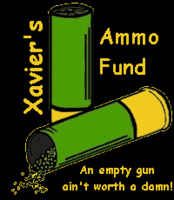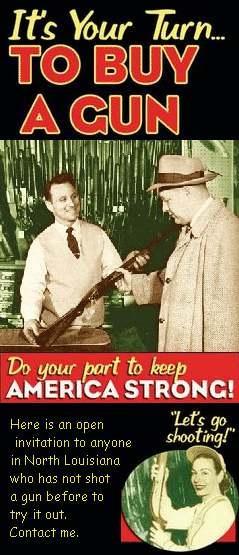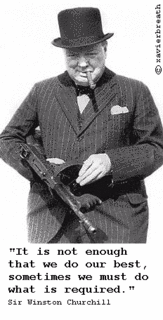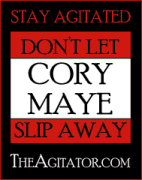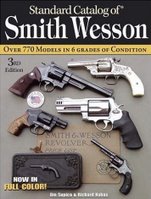Alien Bee/Softlighter II Review
 I ordered a Softlighter II from another source in lieu of a softbox.
I ordered a Softlighter II from another source in lieu of a softbox. I immediately noted that the general purpose light stand did not seem stable enough with the monolights. I ordered another heavy duty stand from Buff, and set aside the lighter duty stand for speedlights. In general, I have been impressed with the Alien Bees lights and the Cybersync activation system. I have used the system on five photo shoots over the past month and a half. I have not had one misfire.
The AlienBee monolights can be set to operate as a slave, using the Nikon's commander mode to activate them, or they can be activated with a radio control system such as the Cybersync. My preference is to make my key light radio controlled, and operate the accent light as a slave. I have also modified a Vivitar 283 speedlight with a Wein Peanut Slave to use as a hairlight if desired.
The AlienBee monolights recharge fast. I have found that I can shoot a burst of five frames per second, with the two B800s set to half power and I will not have a single dim frame. If I raise the power up to 3/4 or above, a slight difference in the image lighting can be discerned in successive frames.
I like the fact that I can plug everything into a wall socket and forget about batteries. Already, the difference between the Vivitar 283 and the AlienBees is apparent. I would not want to be limited by my supply of Duracells or tethered to a convenience store. Sure, a wall socket and alternating current has it's limitations as well, but that is only a limitation of location. I can plan for that, and switch to all speedlights if I have no power.
The Softlighter II is a very well made light modifier. The system can be used as a softbox, a bounce umbrella or a shoot through umbrella. That is versatility. I have found the construction to be superb. When stowed, the Softlighter II is as small as an umbrella in a cloth case.
 In fact, it comes with its own cloth case that holds everything. It is quick to assemble, and simple to use. The only issue I have had is the fire resistant sock is about 1/32 too small to fit over the AlienBee monolight's square case. A little stretching of the stitches to the point of refusal, and the Softlighter fit, but a better fit would be appreciated. Of course, the Softlighter is from another manufacturer, and it can't be expected to fit everything perfectly. This would not be an issue with most monolights or with speedlights.
In fact, it comes with its own cloth case that holds everything. It is quick to assemble, and simple to use. The only issue I have had is the fire resistant sock is about 1/32 too small to fit over the AlienBee monolight's square case. A little stretching of the stitches to the point of refusal, and the Softlighter fit, but a better fit would be appreciated. Of course, the Softlighter is from another manufacturer, and it can't be expected to fit everything perfectly. This would not be an issue with most monolights or with speedlights. The umbrella shaft of the Softlighter II is a two piece affair, allowing the lower section of the shaft to be removed once the umbrella is opened. Then the Softlighter can be brought right up to the subject, resulting in incredibly soft light. Initially I was concerned about the quality of the threads on this shaft. I should not have been. They are cut well, and I have not had a single crossthreading incident. I have not placed any grease on them, but I might dab a bit of high temp white grease on them in the future as insurance. The Softlighter II is so flexible, so easily carried, and creates such a beautiful glow that I plan on ordering another one in the future, just to have a back-up and possibly use as a soft accent.
Now, I am a rank noob when it comes to studio lighting. I do not have the years of experience using different brands and set-ups on difficult locations that some people have. I have only used these lights and modifiers in five or six photo shoots thus far. Still, they have been packed, unpacked and packed again easily and without fail by a newbie. They have traveled down dirt roads and across railroad tracks in a plastic box tossed in the back of a Jeep. Did I not once say I don't baby my equipment? I think so. There will be some readers who will want to know how the equipment held up after a year of this, and that is understandable. At present, I can only give my assessment from where I am at now. The stuff is durable and it has improved my portraiture markedly. I should have made this leap long ago. It is exhilarating to have so much to learn again.
I once thought that lights were a nice addition to photography. I was wrong. Photography is all about light. Without the ability to control and manipulate the light, the photographer is at the mercy of the sun and clouds, or severely limited to amateurish on camera flash photography. That is not where I wanted to be. I have finally come to the realization that my lights and my ability to control them are as important as my camera body and lens. There is no reason that the investment should not be comparable.
The final indicator of quality lighting is in the images though, so with apologies to those readers who come here for the guns (see the Clark Meltdown 649 post y'all) here are some of my recent portraits with the strobist information............
 Strobist: AlienBee AB800 with Softlighter II camera left. Triggered by Cybersync.
Strobist: AlienBee AB800 with Softlighter II camera left. Triggered by Cybersync. Strobist info: AlienBee B800 with Softlighter II camera left, 10:00. AlienBee B800 with reflecting umbrella camera right, 3:00. LumaPro speedlight as a hairlight. Triggered by Cybersync. Gold reflector at 4:00.
Strobist info: AlienBee B800 with Softlighter II camera left, 10:00. AlienBee B800 with reflecting umbrella camera right, 3:00. LumaPro speedlight as a hairlight. Triggered by Cybersync. Gold reflector at 4:00. Strobist info: AlienBee B800 with Softlighter II camera left, 10:00. AlienBee B800 with reflecting umbrella camera right, 3:00. LumaPro speedlight as a hairlight. Triggered by Cybersync.
Strobist info: AlienBee B800 with Softlighter II camera left, 10:00. AlienBee B800 with reflecting umbrella camera right, 3:00. LumaPro speedlight as a hairlight. Triggered by Cybersync.  Strobist info: AlienBee B800 with Softlighter II camera left, 10:00. AlienBee B800 with reflecting umbrella camera right, 3:00. LumaPro speedlight as a hairlight. Triggered by Cybersync. Gold reflector at 4:00.
Strobist info: AlienBee B800 with Softlighter II camera left, 10:00. AlienBee B800 with reflecting umbrella camera right, 3:00. LumaPro speedlight as a hairlight. Triggered by Cybersync. Gold reflector at 4:00. Strobist: AlienBee 800 with Softlighter II camera left 9:00. AlienBee 800 camera right 1:30. Vivitar 283 with Wein Peanut Slave as accent. Triggered by Cybersync.
Strobist: AlienBee 800 with Softlighter II camera left 9:00. AlienBee 800 camera right 1:30. Vivitar 283 with Wein Peanut Slave as accent. Triggered by Cybersync. Strobist: AlienBee 800 with Softlighter II camera left 3:00. Triggered by Cybersync.
Strobist: AlienBee 800 with Softlighter II camera left 3:00. Triggered by Cybersync. Strobist: AlienBee 800 with Softlighter II camera left 2:30. Reflector camera right. Triggered by Cybersync.
Strobist: AlienBee 800 with Softlighter II camera left 2:30. Reflector camera right. Triggered by Cybersync. Strobist: AlienBee 800 with Softlighter II camera Right 9:00. AlienBee 800 with umbrella camera left 11:00. Vivitar 283 with Wein Peanut Slave as accent. Triggered by Cybersync.
Strobist: AlienBee 800 with Softlighter II camera Right 9:00. AlienBee 800 with umbrella camera left 11:00. Vivitar 283 with Wein Peanut Slave as accent. Triggered by Cybersync. Strobist: AlienBee 800 with Softlighter II as Keylight. AlienBee 800 with umbrella camera left at 11:00. Vivitar 283 with Wein Peanut Slave as accent. Triggered by Cybersync.
Strobist: AlienBee 800 with Softlighter II as Keylight. AlienBee 800 with umbrella camera left at 11:00. Vivitar 283 with Wein Peanut Slave as accent. Triggered by Cybersync. Strobist info: AlienBee B800 with Softlighter II camera left, 10:00. AlienBee B800 with reflecting umbrella camera right, 3:00. LumaPro speedlight as a hairlight. Camera rotated 45 degrees. Triggered by Cybersync.
Strobist info: AlienBee B800 with Softlighter II camera left, 10:00. AlienBee B800 with reflecting umbrella camera right, 3:00. LumaPro speedlight as a hairlight. Camera rotated 45 degrees. Triggered by Cybersync.  Strobist: AlienBee 800 with Softlighter II camera left 10:00. Reflector camera right. Triggered by Cybersync.
Strobist: AlienBee 800 with Softlighter II camera left 10:00. Reflector camera right. Triggered by Cybersync. Strobist: AlienBee 800 with Softlighter II camera Right 9:00. AlienBee 800 with umbrella camera left 11:00. Triggered by Cybersync.
Strobist: AlienBee 800 with Softlighter II camera Right 9:00. AlienBee 800 with umbrella camera left 11:00. Triggered by Cybersync. Strobist: AlienBee 800 with Softlighter II camera left 9:00. AlienBee 800 with umbrella camera right 2:00. Triggered by Cybersync.
Strobist: AlienBee 800 with Softlighter II camera left 9:00. AlienBee 800 with umbrella camera right 2:00. Triggered by Cybersync. Strobist info: AlienBee B800 with Softlighter II camera left, 10:00. Gold reflector camera right, 3:00. Triggered by Cybersync.
Strobist info: AlienBee B800 with Softlighter II camera left, 10:00. Gold reflector camera right, 3:00. Triggered by Cybersync.  Strobist: AlienBee 800 with Softlighter II camera left 10:00. Reflector camera right. Triggered by Cybersync.
Strobist: AlienBee 800 with Softlighter II camera left 10:00. Reflector camera right. Triggered by Cybersync. Strobist: AlienBee 800 with Softlighter II camera left 9:00. AlienBee 800 camera right 1:30. Vivitar 283 with Wein Peanut Slave as accent. Triggered by Cybersync.
Strobist: AlienBee 800 with Softlighter II camera left 9:00. AlienBee 800 camera right 1:30. Vivitar 283 with Wein Peanut Slave as accent. Triggered by Cybersync.  Strobist: AlienBee 800 with Softlighter II camera left 9:00. AlienBee 800 camera right 1:30. Vivitar 283 with Wein Peanut Slave as accent. Triggered by Cybersync.
Strobist: AlienBee 800 with Softlighter II camera left 9:00. AlienBee 800 camera right 1:30. Vivitar 283 with Wein Peanut Slave as accent. Triggered by Cybersync.For those faithful readers who have endured thus far, or who might have an interest in photography. more of my work can be see on my photostream on flickr. Feel free to comment there as well as here.
Books I have been reading on photography and lighting:
Sculpting with Light: Techniques for Portrait Photographers by Allison Earnest
Minimalist Lighting: Professional Techniques for Studio Photography by Kirk Tuck
Beyond Portraiture: Creative People Photography by Bryan Peterson
And finally, because I feel I need help in this area,
Posing Techniques for Photographing Model Portfolios by Billy Pegram
Labels: Photography, Photography Gear, Photography Technique, Strobist, Strobist Gear



